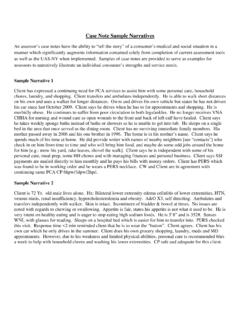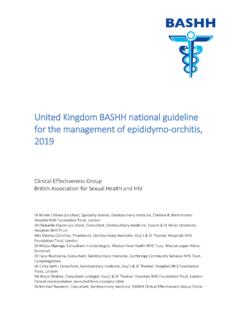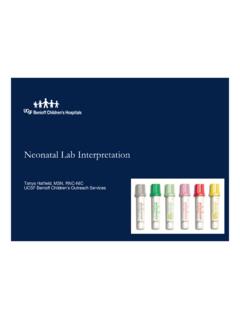Transcription of PHTLS PREPARATION PACKET 9th Edition
1 Shaun Fix Florida's Premier Provider Of Quality Medical Training Programs Nationally Accredited and OSHA Programs CEU Provider Since 1988. PHTLS . PREPARATION . PACKET . 9th Edition Note: This PACKET contains the latest trauma guidelines, review information and pre-test. It is mandatory that participants review the textbook, complete the pre-test and be familiar with the PHTLS . assessment and management criteria prior to the course. A pre-test score of 76% is required for this course. The pre-test will be collected at the beginning of the class. Feel free to contact our office should you have any questions (772) 878-3085 * Fax: (772) 878-7909 * Email: 597 SE Port Saint Lucie Blvd * Port Saint Lucie, Florida 34984.
2 Visit Our Website Pre-Hospital Trauma Life Support Day 1. 45 min Welcome, Course Intro, Collect Pre-test . Lesson 1 (Introduction)- 45 min Lesson 2 (Scene Mgt & Primary Survey) . 10 min BREAK. 60 min Lesson 3 (Airway)- 10 min BREAK. 60 min Lesson 4 ( Breathing, Ventilation & Oxygen)- 45-60min LUNCH. 60 min Lesson 5 (Circulation)- 30 min Lesson 6 (Secondary Survey) . 10 min BREAK. Skills Stations- 40 minutes each Skills Case Station 1: - PHTLS assessment Baseline 1 & 2. assessment Sequence (Practice full PHTLS . sequence). -Helmet Removal (Sports, Motorcycle). -Perilaryngeals Airways Station 2: Skills Case Airway -Jaw Thrust (chin lift 2 Airway Case 1, 2.)
3 Rescuer) (OPA & NPA). -OPA,NPA Airway Case 6. (Trauma ET). -BVM 1 & 2 person Airway Case 8 (Cric). -Trauma Intubation (Neutral C-Spine, frontal, bougie). -Cricothyrotomy Station 3: Skills Case Bleeding Control & -Plural Decompression Breathing Case 1. Breathing Control -Tourniquet (Decomp). -Wound packing Circulation Case 1. (Hemostatic agents) Circulation Case 5. Circulation Case 5N. END. Pre-Hospital Trauma Life Support Day 2. 60 min Lesson 7 Part 1 (Disability- Brain Injury)- 10 min BREAK. 60 min Lesson 7 Part 2 (Disability- Spinal Trauma)- 10 min BREAK. 60 min Lesson 8 (Special Considerations)- 45-60 min LUNCH.
4 60 min Lesson 9 (Summation)- Final Scenario Evaluations- 40 minutes each (Each student is team leader in 1 case Station 1: Skills Case Review Rapid Special Case 2, 6 & 14. Extrication Station 2: Skills Case Review IO for Trauma Multi Trauma 1, 2, & 3. Station 3: Skills Case Review Traction Splint Multi Trauma 4, 5 & 6. Review Pelvic Binder Circulation Case 4 (Pelvic). 60 min Written Exam Prehospital External Hemorrhage Control Protocol Apply direct pressure/pressure dressing to injury Direct pressure effective Direct pressure ineffective or impractical (hemorrhage controlled) (hemorrhage not controlled).)
5 Wound amenable to Wound not amenable to tourniquet placement tourniquet placement ( extremity injury) ( junctional injury). Apply a tourniquet* Apply a topical hemostatic agent with direct pressure#. Pack wound if necessary Spine Board Debate It is agreed that the long board is an appropriate device for extrication and patient movement on scene and to a stretcher, but 2015 brought about documented controversy as to its effectiveness at truly immobilizing the spine and its benefits; Key Issues: - There are no documented studies to support that straight rigid board immobilization with a collar is beneficial.
6 - Some patients' anatomy actually flexes the head forward while others hyperextend the head when placed on a board. - Patients will all begin to complain of neck and back pain if left on a hard board. - Skin breakdown can occur at points that contact the board. - Obese patients are at risk for positional asphyxia - Emergency airway procedures are more difficult to perform on immobilized patients The lack of supporting benefit and the growing potential for detrimental side effects has led many areas to decrease or completely remove the use of spine boards for anything more than extrication or movement.
7 Instead opting for placing a collar on the patient and lying the spine on the stretcher. *Some protocols for ruling in or out the use of spinal immobilization are still utilized. PHTLS Shock There are three types of shock: Hypovolemic shock Vascular volume smaller than normal vascular size Loss of fluid and electrolytes Dehydration Loss of blood and fluid Hemorrhagic shock Distributive shock Vascular space is larger than normal Neurogenic shock (hypotension). Psychogenic shock Septic shock Anaphylactic shock Cardiogenic shock Pump failure Classification of Hemorrhagic Shock Class I Class II Class III Class IV.
8 Blood loss (mL) Up to 750 750-1500 1500-2000 >2000. Blood loss (% vol) Up to 15% 15%-30% 30%-40% >40%. Pulse rate <100 100-120 120-140 >140. Blood pressure Normal Normal Decreased Decreased Pulse pressure Normal or increased Decreased Decreased Decreased Respiratory rate 14-20 20-30 30-40 >35. Urine output (mL/hr) >30 20-30 5-15 Negligible CNS/ mental status Slightly anxious Mildly anxious Anxious, confused Confused, lethargic Fluid replacement Crystalloid Crystalloid Crystalloid and blood Crystalloid and blood Signs Associated with Types of Shock Vital Sign Hypovolemic Neurogenic Septic Cardiogenic Skin temperature Cool, clammy Warm, dry Cool, clammy Cool, clammy Skin color Pale, cyanotic Pink Pale, mottled Pale.
9 Cyanotic Blood pressure Drops Drops Drops Drops Level of Altered Lucid Altered Altered consciousness Capillary refilling Slowed Normal Slowed Slowed time Shock assessment Vital Sign Compensated Decompensated Pulse Increased; Greatly increased;. Type of Fracture Blood Loss Potential tachycardia marked tachycardia Rib 125 mL. that can progress to Radius or ulna 250-500 mL. bradycardia Humerus 500-750 mL. Tibia or fibula 500-1000 mL. Skin White, cool, moist White, cold waxy Femur 1000-2000 mL. Blood pressure range Normal Decreased Pelvis 1000-unlimited mL. Level of Unaltered Altered, ranging consciousness from disoriented to coma Management -Ensure oxygenation and ventilation -Control hemorrhage (external or internal).
10 -External- direct pressure or tourniquet or homeostatic agent -Internal-direct pressure (extremity immobilization/ PASG for pelvis/ low abd.). -Move toward a definitive facility -Control body temp (lower the pt). -Fluid replacement for Class II, III, or IV shock -Isotonic crystalloids (lactated Ringers preferred; warm if possible). -Ideally blood or packed RBC's (now being used prehospital). -Controllable bleeds- 1-2 liters (adult) (20 mL/kg peds) Titrated to SBP 80-90 mmHg -Uncontrolled (internal) bleeds- the least amount of fluid required to maintain SBP 80-90 mmHg PHTLS 9th Ed.




